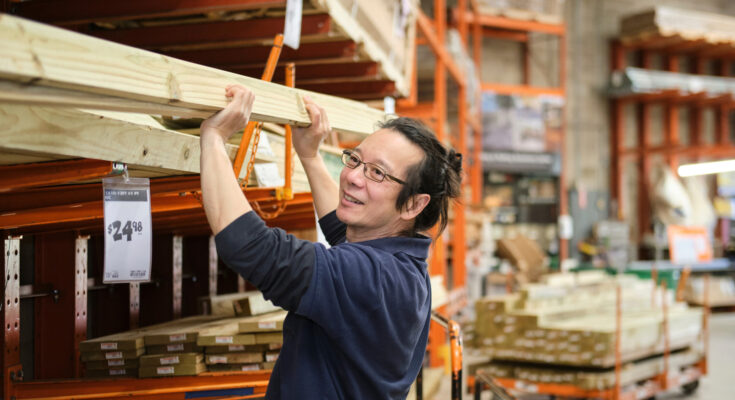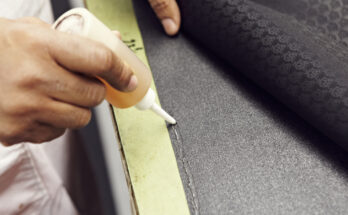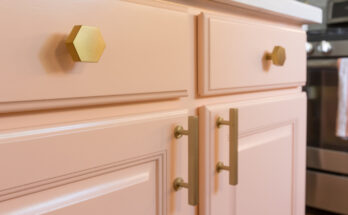What To Consider When Choosing Wood For Your Next DIY Project
We may receive a commission on purchases made from links.
When working on DIY projects, the wood selection process deserves special attention, regardless of your experience level. This is because your choice can influence your overall results, impacting its appearance as well as the structural integrity and longevity. So, follow a systematic approach to narrow down your options and determine whether a particular wood choice aligns with what you have in mind.
Begin by noting your project requirements. What are you building? How are you planning to use it? Will it be indoors or outdoors? What’s your skill level? And, if you’re conscious of your carbon footprint, can your purchase align with your principles (hello, sustainable wood options)? Once you have your answers, balance cost, quality, and personal preferences to ensure your DIY project is successful. To make things easier for you, here’s a list of the points you must keep in mind when sourcing supplies for your next woodworking endeavor.
Decide if you need hardwood or softwood for your DIY project
Choosing between hardwood and softwood is the first decision you need to make when starting any wood DIY project. Hardwoods, like oak, can take nearly 150 years to mature, so their wood is heavier, stronger, and denser. This makes them more durable and resistant to fire, wear and tear, elements, rot, and insect infestation than softer types of wood. They’re also more difficult to scratch. On the other hand, softwood trees, such as pine, spruce, and cedar, take a fraction of the time that hardwoods take to grow. This means they’re easier to source. Plus, being less dense and heavy makes them more flexible, as well as easier to cut and work with.
Hardwoods are the go-to choice for fine furniture — both for indoors and outdoors. Its durability and strength also make it a great choice for framing a house, long-lasting flooring, decks, butcher block countertops, and cabinets. On the other hand, given their flexibility, softwood is a common choice for other DIY projects created with wood. It’s often used to build bed bases, frame structures,and fence in yards.
Decide what your skill level is and choose a wood appropriate for it
When starting a DIY project, your skill level is a good way to guide your wood selection. If you don’t have all the tools to start woodworking at home or are just starting out, go for softwoods. They’re easier to cut, drill, and sand. Pine is a very popular and readily available option. Cedar is a good choice, too, and is a durable wood type for fence pickets. If you’re hoping to undertake beginner-level woodworking projects and want to work with hardwood, go for softer options like poplar. While it dents easily, it’s relatively easier to work with.
If you’re more experienced or are tackling complex projects, hardwoods such as oak, maple, and cherry are suitable choices. However, they require specialized tools, like power saws and routers, to cut and shape due to their high density. And if your project requires intricate carving, you’ll need dry wood.
Balance the cost and quality with your budget
Since hardwoods become harvest-ready at a slow rate, they’re generally more expensive. For example, a maple 2-by-4 board can run about $12 per foot, and a similar red oak board is nearly the same price. Comparatively, softwood accounts for 80% of wood globally and is relatively cheaper. For instance, pine is a common choice, with a 2-by-4 board often costing less than a dollar a linear foot at major retail stores. Cedar is also a budget-friendly option that can often be purchased for a little over a dollar a foot.
To balance cost and quality, explore different grades of lumber. For example, choose expensive lumber, like FAS (Firsts and Seconds) boards, for the visible parts of your projects. Then, select affordable grades, such as #1 and #2 Common, for the hidden portions or for projects where you’re going for a rustic look. You can also work with hardwood veneer (a thin layer of hardwood pressed on particle board, plywood, or MDF) if you’re on a tight budget. When you go shopping, look out for a bin or shelf of discounted cut or damaged boards that still have enough unblemished length for your needs. And if you’re working on a larger project where you need a lot of lumber, buy it in one go from a store that offers a bulk discount.
Think about aesthetics like grain, color, and texture for visual appeal
Woods with subtle or minimal grain patterns offer excellent options for minimalist and modern aesthetics. Closed-grain hardwoods like maple and cherry feature smaller, less visible pores that create a cleaner appearance. If you don’t want visible grain patterns on your project, you can opt for these types as they provide exceptionally smooth surfaces with minimal texture. Softwoods have softer, less pronounced grains as they don’t have pores. Their patterns are also straighter, making them perfect for projects requiring wood with minimal to no patterns and grains.
For more character-rich, earthy, or vintage aesthetics, go for woods with pronounced grains. Open-grain hardwoods such as oak and mahogany have larger, more noticeable patterns that add distinctive texture and visual impact. These pronounced patterns come in various styles, including tiger stripe, that are ideal for a natural, rustic look. Similarly, flame-like patterns give a traditional appearance. Or, check out unique grain patterns like burl (walnut) or bird’s eye (maple) to add a layer of drama to your overall decor. You could even polish or paint your wood surface to either enhance or tone down the look of the grain.
Focus on potential issues like knots or warping to avoid mistakes
It’s inevitable to encounter defects — both natural (knots, warping, and moisture-driven movement) and acquired (dents and insect damage) — when working with wood. So, you should know what to look for when you’re shopping for projects. Structurally, knots negatively affect the strength of the wood, and warping causes distortion and stresses joints. Plus, wood continues to dry out naturally even after you buy it, and this can sometimes cause cracking (due to warping). Aesthetically, all these flaws detract from the finish.
Knots may add character, but they can eventually fall out of the boards. So it’s important to check how the grain flows around the knot. A curve in a consistent pattern is a live knot, which means it’s intergrown with the wood and is safe for use. On the other hand, if you see a dark ring or crack separating the knot from the surrounding area, that’s a dead knot. Steer clear of the board since it can weaken the wood.
Also, inspect lumber for defects prior to making a purchase. Look for dark, crumbly areas in the wood with a musty or earthy smell, as that’s how rot appears. And if you see tiny holes on the surface, that’s a sign of insect damage. To check the wood for warping, lay the boards down on a flat surface. If it wobbles or shows any bends or curves, it’s likely warped and not a good choice for your DIY project. Additionally, keep an eye out for surface cracks and cracks throughout the board.
Consider sustainability and responsible sourcing for eco-conscious choices
Careless logging can contribute to overly-exploited woodlands and imbalanced ecosystems. Forests absorb carbon dioxide from the atmosphere, helping us fight climate change. If you’re an ethical buyer, there are many ways to make your woodworking projects more sustainable and responsibly sourced. If you’re worried that you might have to compromise on quality to be eco-friendly, don’t be. Sustainable timber is also high-quality wood since its harvesting is a standardized process.
When buying wood, look for certifications like the Forest Stewardship Council (FSC) label, which indicates responsible sourcing. You could also ask your lumber supplier about the wood’s origin or seek vendors who specialize in sustainable wood. Some softwoods like pine and fir also grow faster than hardwoods. If your project requires hardwood, go for eucalyptus, which is often used in outdoor furniture and is known for its strength and sustainability.
Transporting wood also adds to the carbon footprint, so buy it from your local lumber seller. Making small changes to your work process also makes a world of difference. For instance, forego chemicals for water-based and natural finishes. General Finishes Water Based Wood Stain is a good option.
Think about alternative wood options like reclaimed wood and MDF for unique projects
Reclaimed wood is lumber that’s recycled and reused. It’s known for its strength and durability as well as it’s charm. Though, don’t confuse it with salvaged wood, which is often new wood that is a by-product of tree harvesting and it hasn’t been previously used. Reclaimed wood offers a unique character with its distinct look. Not only is it a stylish choice, but it’s also more sustainable and can be budget-friendly.
Sourced from old buildings, barns, or even salvaged furniture, you can use it for a rustic wood accent wall DIY, outdoor seating projects, and creating statement pieces like headboards. If you know of a construction (or demolition) site, you can get it from there as well with permission. However, you’ll have to prepare the wood to use it again. But, if you don’t want the hassle of preparing the wood and don’t mind paying extra, then look for it at stores like Home Depot or specialized lumber retailers.



